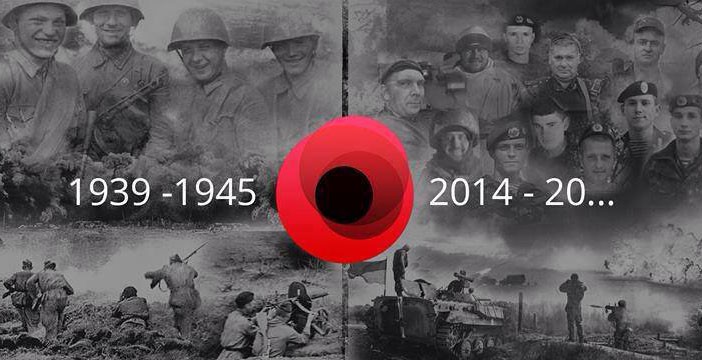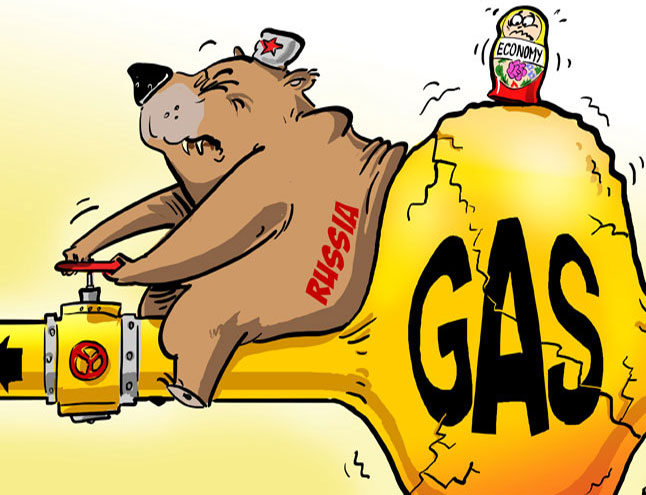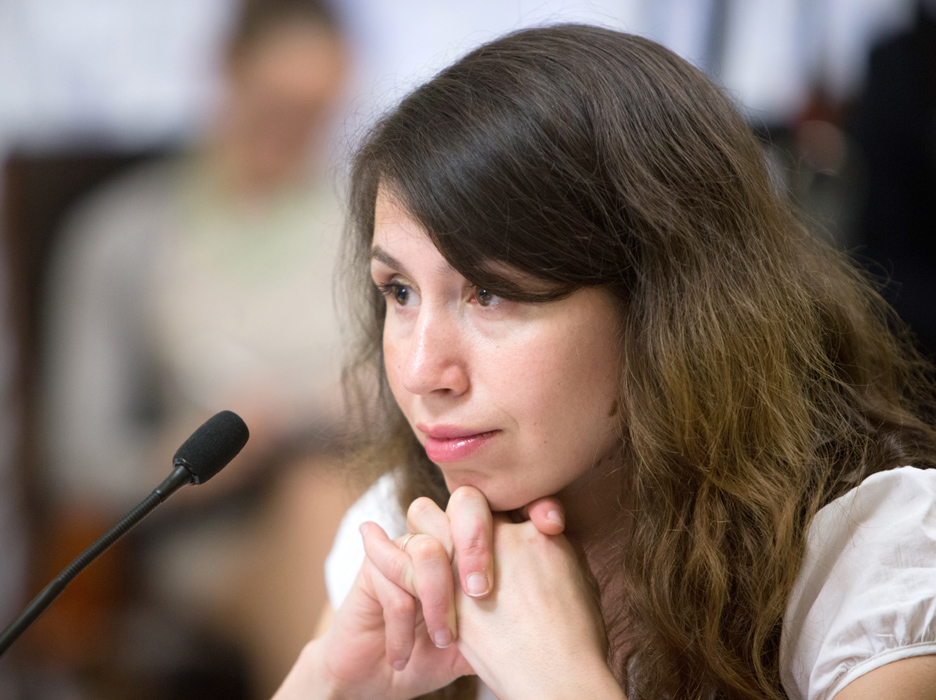While the West remains paralyzed by political inertia, Russia’s army and terrorists are busy removing whole factories from areas under their occupation
by Vitalii Usenko, Ed Huet and Dmytro Usenko
Russian media has confirmed that Russian “humanitarian convoys” are robbing and removing Ukrainian enterprises located in a territory controlled by Russian-backed terrorists supported by Russian troops, as well as taking Ukrainian specialists with them.
Vesti.ru reported on the launch of a private company, Luhansk Machinostroitel, as a new entity for the Luhansk Machine Building plant, newly located in the settlement of Cheboksary in Chuvashiya, Russia. 23 people and their families were taken out from the combat zone, along with machines and equipment so as to continue work in the new location.

The 12 year old company from Luhansk was mainly active in the Russian market, and business owners therefore decided to evacuate equipment and staff to Russia. As commented on by Channel 24 Russia, the difficult decision to transfer production to Russia was taken by the owners and management of the company, after its workshops were destroyed as a result of shelling. The owners have promised company staff that they will receive decent salaries and accommodation in Russia. "If it had been possible to take out more equipment [from Luhansk Machine Building plant], we would be running at full production now, additional production lines would be opened, and we would have created another 50 jobs," said Nikita Druzyev, CEO of Luhansk Machinostroitel. In the new building provided by Russian authorities, machines have already been installed, the restaurant is renovated, and the plant should commence operation today, August 29th.
As previously reported, machinery and equipment from strategically important Ukrainian enterprises were taken out by Russia from territories controlled by Russian-backed terrorists.
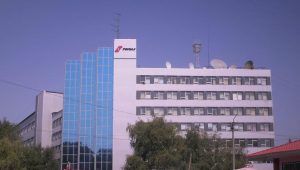
"Russian KAMAZ trucks are being loaded with equipment from the Donetsk Topaz plant, which manufactures modern early warning radar equipment like the Kolchuga radar complex", said Andriy Lysenko, Ukrainian National Security & Defence Council (NSDC) speaker, at a briefing of the Information Analytical Center.
Kolchuga Radar is an electronic warfare support (ESM) system developed in the Soviet Union. The system contains three or four receivers deployed many kilometres apart, which detect and track aircraft by triangulation and multilateration of their radio frequency (RF) emissions. Kolchuga is able to detect and identify many types of radio devices mounted on ground, airborne, or naval vectors.
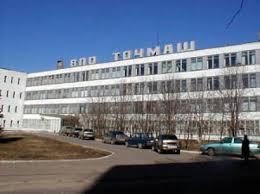
As reported
by the NSDC on August 26, Russian-backed terrorists took four vehicles with high-precision equipment from the Tochmash military-industrial complex in Makeyevka Donetsk region for intended “evacuation” to Russia.
The situation is similar in Luhansk. Many men in camouflage were noticed near the Luhansk Cartridge Plant. According to local residents, production lines were dismantled by the men. This is a unique plant, because it was not only able to produce ammunition for small arms, but also manufacturing production lines.
White KAMAZ trucks were seen near JSC Yunost. This plant is designed to produce highly stable, very precise sealed microsize relay for aviation, aerospace and missile industries.
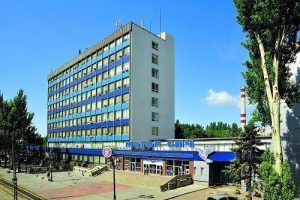
High-technology, ultra-precise strategic production is also carried out in Snizhne, Donetsk Oblast, and Donetsk city. Motor Sich (Zaporizhzhia) produced in Snizhne and Donetsk blades and discs for jet turbines and jet engines for aircraft and helicopters, and Lyman jamming devices with frequencies of 100-400 MHz and 960-1215 MHz bands used against aircraft.
In his article in the Russian monthly magazine Sovershenno Sekretno (Top Secret) on February 24 this year, the Russian journalist and military analyst Vladimir Voronov noted that “it is difficult to overestimate the significance of Motor Sich for our [Russian] aviation, at least because its engines are used in all our helicopters, including the combat ones: all modifications of Mi-8, Mi-171, Mi-24, Mi-35, Mi-26, Mi-28, Ka-27, Ka-29, Ka-32, Ka-50, Ka-52... Some of these engines are manufactured (or assembled from supplied components) in Russia, but only some, not many of them. Will Russia manage to assemble the VK-2500 engine for Ka-52 and Mi-28 out of Russian components, a local version of TV3-11BMA once designed by Motor Sich specifically for Ka-50? Previously, Russia used to receive the majority of components for VK-2500 from Motor Sich.”
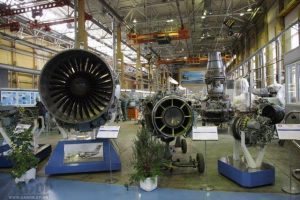
It is a known fact that Russian servicemen are expecting over 1,000 new attack helicopters (not including the transport ones) to be delivered shortly, which means at least 3,000 engines, two main ones per each helicopter and at least one spare one. However, Russian manufacturers are clearly not capable yet of producing so many new engines: 50 such engines were planned to be made by them in 2013, they failed to produce them. Even if everything goes as planned, this is not enough to implement the helicopter program because old engines will also need to be replaced. Therefore Ukraine's Motor Sich remains the main supplier of VK-2500 and its components as well as other engines for helicopters used by the Russian Air Force. It also remains the supplier of engines for aircraft used by the Russian Air Force and civilian airlines such as Il-18, Il-38, An-8, An-12, An-24, An-26, An-30, An-32, An-72, An-74, An-124, An-140, An-148, Be-12, Be-200, Yak-40, Yak-42…”
It is sad that the discussion arranged by the Gorshenin Institute on the LB.UA website and Facebook in March 2014 went unnoticed by Western military experts. The Gorshenin Institute clearly identified that “in the light of the hypothetical threat of Ukraine’s association with the European Union and rapprochement with NATO, the goals of the Russian defense enterprises are in jeopardy, and thus access to the Ukrainian defense enterprises needs to be preserved at all cost. We [Gorshenin Institute] should also add the thought by a Russian military expert that Russia may be interested in Ukraine as a huge mobilization reserve of manpower”.
“The geography of the Ukrainian defense enterprises, with which Russia links its strategic doctrine, strikingly coincides with the geography of the points of instability in Ukraine. We [Gorshenin Institute] see that some forces in these regions are creating the prerequisites for legitimizing the annexation of the regions based on the Crimea scenario. We should note that one of the points with a high concentration of such objects is the city of Kyiv.”
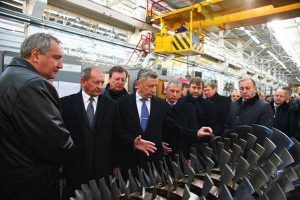
On December 3, 2012, a group of experts from the Public Council of the military-industrial commission under the Russian government presented an analytical report. Titled Russia as an Arms Importer: Challenges and Opportunities, its conclusions state that it is absolutely impossible to create a fully autonomous Russian defense industry. “Our design bureaux are overloaded now. We are lagging behind even on the Defense Ministry’s orders,” Dmitriy Rogozin, the main supervisor of Russia's defense industry and the country’s deputy prime minister, said in December 2013. That is the reason behind such interest in Ukraine. Dmitriy Rogozin made a brief inspection of the key facilities of the Ukrainian defense industry in early December 2013.
Another dream of Russia is Dnipropetrovsk and its enterprises Pivdenne (Yuxhnoye) and Pivdenmash (Yuzhmash). Pivdenne is a sensitive issue for Russia, as it serviced Russian ICBMs (SS-18 Satan). Today, the Russian Strategic Missile Forces (RSMF) have only four dozen fully Russian RT-2UTTKh Topol-M missiles (NATO reporting name: SS-27 Sickle B) at their disposal. General Sergei Karakayev said in an interview on December 17, 2011 that Topol-M missiles are “an inadequate replacement for the ICBM SS-18”. The Ukrainian defense industry is essential to prolong the length of service of ICBM SS-18s. In an interview with Radio Liberty, military analyst and journalist Vladimir Voronov pointed out that Ukrainian “traces” can be found in more than 50 percent of Russia’s land-based intercontinental ballistic missiles (ICBMs), which in turn are the means of delivery for more than 80 percent of the warheads.
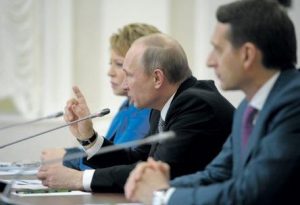
Russia is not even hiding its plans: Vladimir Putin is trying to lure Ukraine’s defense industry specialists to Russia. As reported by a UNIAN
correspondent, the Russian President said at a meeting with federal assembly legislature members that the Russian government would provide funding for the relocation of Ukrainian defense industry specialists to the enterprises of the Russian military-industrial complex. The Russian president’s strategy, it seems, is to try to move the Ukrainian defense industry to Russia in case his plan of controlling Eastern and Southern Ukraine (“Novorossiya”) fails. As we can see from current developments, Putin would like not only to relocate Ukrainian defense industry specialists to Russia, but is also overseeing the theft and removal of Ukrainian high-tech defense enterprises in territories controlled by Russian-backed terrorists and the Russian army.
It seems that US and EU military experts and advisors ignore these threats to western state security. Should Russia succeed in controlling by whatever means Eastern and Southern Ukraine (“Novorosiya”), it can successfully interrupt Ukraine’s supply of arms and military equipment, material that Ukraine with non-Nato ally status cannot obtain from the US or NATO. Restrictions on supplying Ukraine with arms and military equipment have still not been lifted by the US and EU.

President Barack Obama said he would not supply military aid to Ukraine, in spite of Ukraine now being invaded by Russia. Instead, he promised more diplomatic and economic aid to Ukraine.
What Kurdish forces Islamic fighting Sunni militants in Iraq concerns and co-operation with Iran in this issue – no problem and no reservations. As reported by the Wall Street Journal “The US is providing direct, covert military aid to Kurdish forces struggling to repel well-armed Sunni Islamic State militants who have seized key parts of northern Iraq”. American officials said direct arms deliveries to the Kurdistan Regional Government, via the CIA, demonstrate their intent to equip the Peshmerga (Kurdish fighters) to tackle Islamic State. American airstrikes were used to help Kurdish forces. US and Iran, longtime competitors for influence in Iraq, are now supporting the same side in Iraq – Kurdish fighters. The State Department has acknowledged that the US and Iran share an understanding of the threat of the Islamic State.
Quite different approach to Russia and to the military aid to Ukraine: “It is not in the cards for us to see a military confrontation between the United States and Russia in this region,” he said in an afternoon press conference on 28 August in the White House. He blamed Russia for the invasion, but he declined to use the term when asked by the reporter if it is an invasion.
This is very cowardly position for Obama not to recognize Russia’s invasion in Ukraine. On August 28, Nato released satellite images showing Russian forces numbering more than 1,000 troops operating inside Ukraine.
We may recall that while a US Senator, Barack Obama together with Senator Dick Lugar in 2005 pushed through a bill that helped destroy more than 15,000 tons of ammunition, 400,000 small arms and 1,000 anti-aircraft missiles in Ukraine. The two senators secured US funding to help destroy the weapons instead of leaving them intact. Barack Obama won $48 million in federal funding to help Ukraine destroy thousands of tons of guns and ammunition – weapons which are now unavailable to the Ukrainian army. Most of the ammunition stockpiles – crucial for keeping a standing army battle-ready – were destroyed.
Germany has a similar position, and is only expressing general non-binding words of support. Angela Merkel assured in a telephone conversation with Petro Poroshenko on August 29, 2014 “of readiness to support resolute actions of the EU” at the next meeting of the European Council that will be held on August 30 this year. In particular, the Chancellor noted that the EU “should demonstrate solidarity with Ukraine.” What this “demonstration of solidarity” will be in practice remains unclear.

As reported by VoA, NATO chief Rasmussen said it is now clear that Russian troops and equipment have illegally crossed the border into eastern Ukraine. He said this is not an isolated incident, but part of a pattern over many months to destabilize Ukraine as a sovereign nation.
The NATO chief also said that Moscow “has fired on Ukraine, both from Russia and from within the country itself”, where NATO estimates 1,000 Russian troops are operating. It says another 20,000 are marshaled near Ukraine's border.
Rasmussen said he will make clear to Ukrainian President Petro Poroshenko, at the summit in Wales, NATO's "unwavering support" for and "strong solidarity" with Ukraine. Rasmussen also said NATO leaders would decide at the summit on enhanced cooperation with Ukraine, including financing for upgrading its military logistics, command and control, and cyber security systems, and on help for its wounded troops. The NATO chief also mentioned that he “respected Ukraine's right” to seek alliances with other countries.

"I am not going to interfere with political discussions in Ukraine, but let me remind you of NATO's decision taken at the Bucharest summit in 2008 according to which Ukraine will become a member of NATO, provided, of course, that Ukraine so wishes and provided that Ukraine fulfils the necessary criteria". “We fully respect if the Ukrainian Parliament decides to change that policy [of non-alliance] because we adhere to the principle that each and every nation has a right to decide itself without interference from outside and we hope that other nations adhere to same principle,” Rasmussen said.
Such declarations look hypocritical, as the United States and EU will continue co-operation with Russia in the space and missile industries, at least until 2020.

Not all politicians in the US and EU are like Obama and Merkel. US Senator McCain said
"It's a cowardly act on our part to not give the Ukrainians any defensive weapons. They've been begging us for weapons with which to defend themselves, where perhaps they could have defeated these separatists."
The United States is considering the possibility of granting Ukraine the status of an ally without NATO membership. US Congress members introduced a bill, the Ukraine Security Assistance Act of 2014, in the US House of Representatives recognizing Ukraine as a main non-NATO ally, as well as providing the country with direct military assistance, as reported by the press service of Republican Jim Gerlach on July 24, 2014.
If approved, the Act will authorize the US President to provide Ukraine with specified defense articles, services, and training. This Act states that during the period in which Ukraine meets specified democratic government and security cooperation criteria it shall be treated as a major non-North Atlantic Treaty Organization (NATO) ally.
If approved Ukraine Security Assistance Act of 2014 will:
- authorize US President to provide Ukraine with specified defense articles, services, and training.
- direct the Secretary of Defense (DOD) to conduct or complete an ongoing assessment of the capabilities and needs of Ukraine's armed forces, and provide it to Congress
- direct US President to increase: (1) military-to-military interactions of the US Armed Forces with the armed forces of Ukraine, and (2) US and NATO security assistance to Ukraine.
- direct the Secretary of State to seek to enter into negotiations with Ukraine to establish new, or strengthen existing, bilateral and multilateral defense cooperation agreements, including agreements related to cyber defense cooperation
The act expresses the opinion of Congress that the President should:
- provide Ukraine with appropriate intelligence and other information to determine the location, strength, and capabilities of the military and intelligence forces of the Russian Federation located on Ukraine's eastern border and within its territorial borders, including Crimea;
- take steps to ensure that such intelligence information is protected from further disclosure; and
- report to Congress detailing such disclosure.
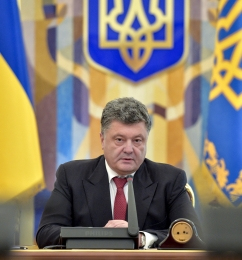
The Russian Aggression Prevention Act of 2014 could provide major non-NATO ally status for Ukraine, Georgia, and Moldova (during the period in which each of such countries meets specified criteria) for purposes of the transfer or possible transfer of defense articles or defense services not implemented.
This Act could direct the US President to increase: (1) US Armed Forces interactions with the armed forces of Ukraine, Georgia, Moldova, Azerbaijan, Bosnia and Herzegovina, Kosovo, Macedonia, Montenegro, and Serbia; and (2) U.S and NATO security assistance to such states.
It is very important that these bills be passed as soon as possible. Major non-NATO ally status would entitle Ukraine to broad financial aid from the US to buy military equipment and weapons. It confers a variety of military and financial advantages that otherwise are not obtainable by non-NATO countries. EU and NATO states should follow the US initiative and pass similar legislation to provide military equipment and weapons to Ukraine. The country can become the stronghold of the free world in Europe. It can happen once the most modern, trained, well-equipped army imbued with a western perspective and values is created with the help of the US, Canada, the EU, and NATO member states.
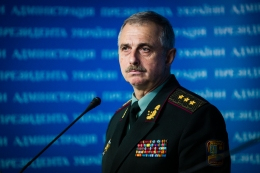
President Petro Poroshenko called again for the US to designate Ukraine a major non-NATO ally on August 28, 2014. Petro Poroshenko stressed that amid the current situation it could be reasonable to ask the US congress to grant Ukraine a special status - as to Israel, Australia and Philippines, which are allies outside the NATO block - in order to resolve the security issue.
Deputy Secretary of the National Security and Defense Council (NSDC) Mykhailo Koval said on August 28, 2014 that according to NSDC decision Ukraine “asks the UN Security Council, NATO, EU, OSCE and strategic partners for help. “Ukraine hopes for the US help through granting Ukraine a major non-NATO ally status."
As reported by the BBC on August 29, Ukrainian Prime Minister Aresniy Yatsenyuk said the government was entering a bill to the Verkhovna Rada [parliament] about the cancellation of Ukraine's non-bloc status and resumption of Ukraine's course for Nato membership.
Will the US, EU and Nato hear the voice of Ukraine? Have US and EU “chickened out” before Russia, leaving them ignoring even their own national security interests?
As of today, morning August 30, 2014 we do not know.
Written by: Dr. Vitalii Usenko, MD, MBA, expert of the Center of Military-Political Studies in the sphere of psychology of communications, Ed Huet, Edmond Huet, Euromaidan Press armament and military questions specialist, consultant to French TV and radio and Dmytro Usenko, student at Rotman School of Management, University of Toronto
Edited by Michael Garrood


